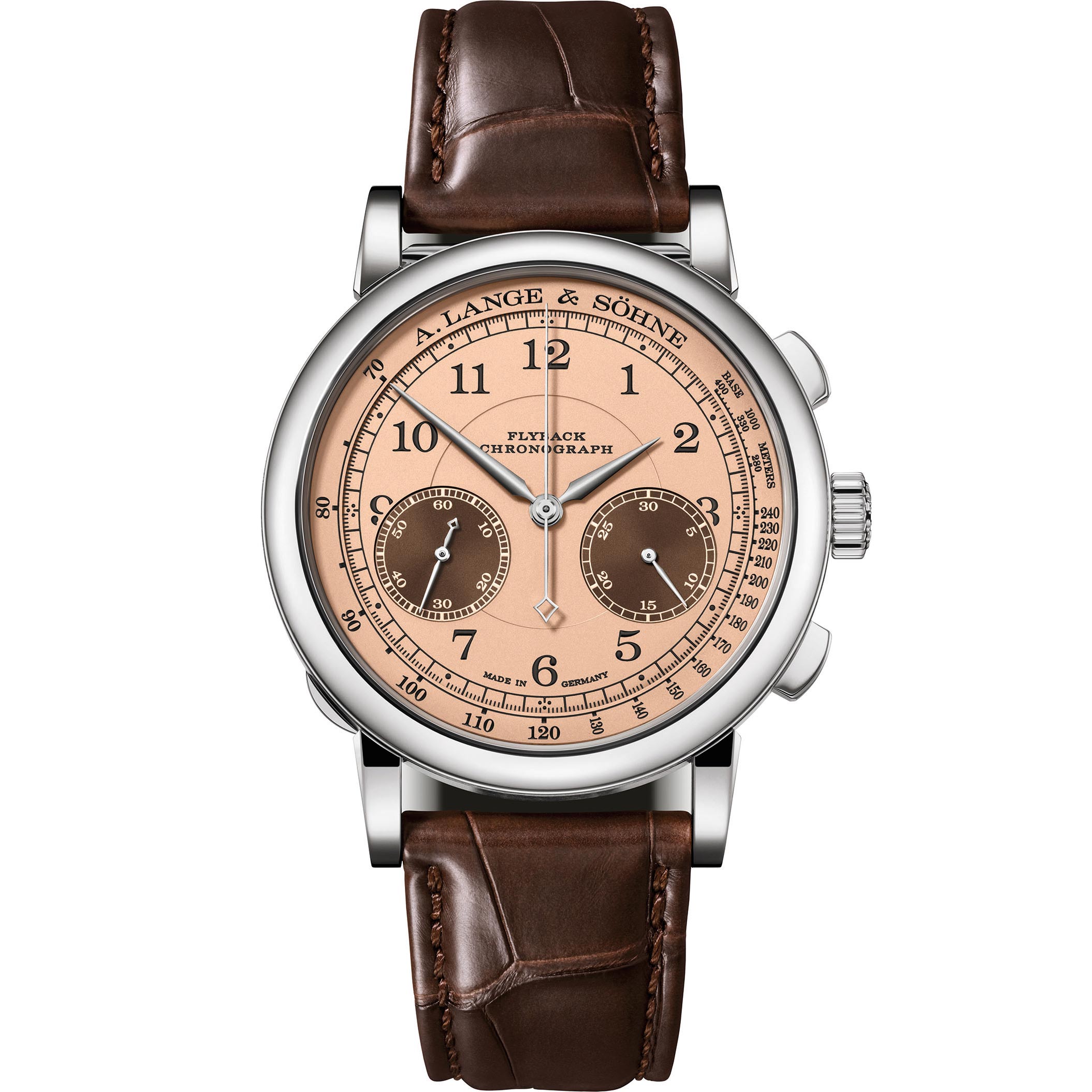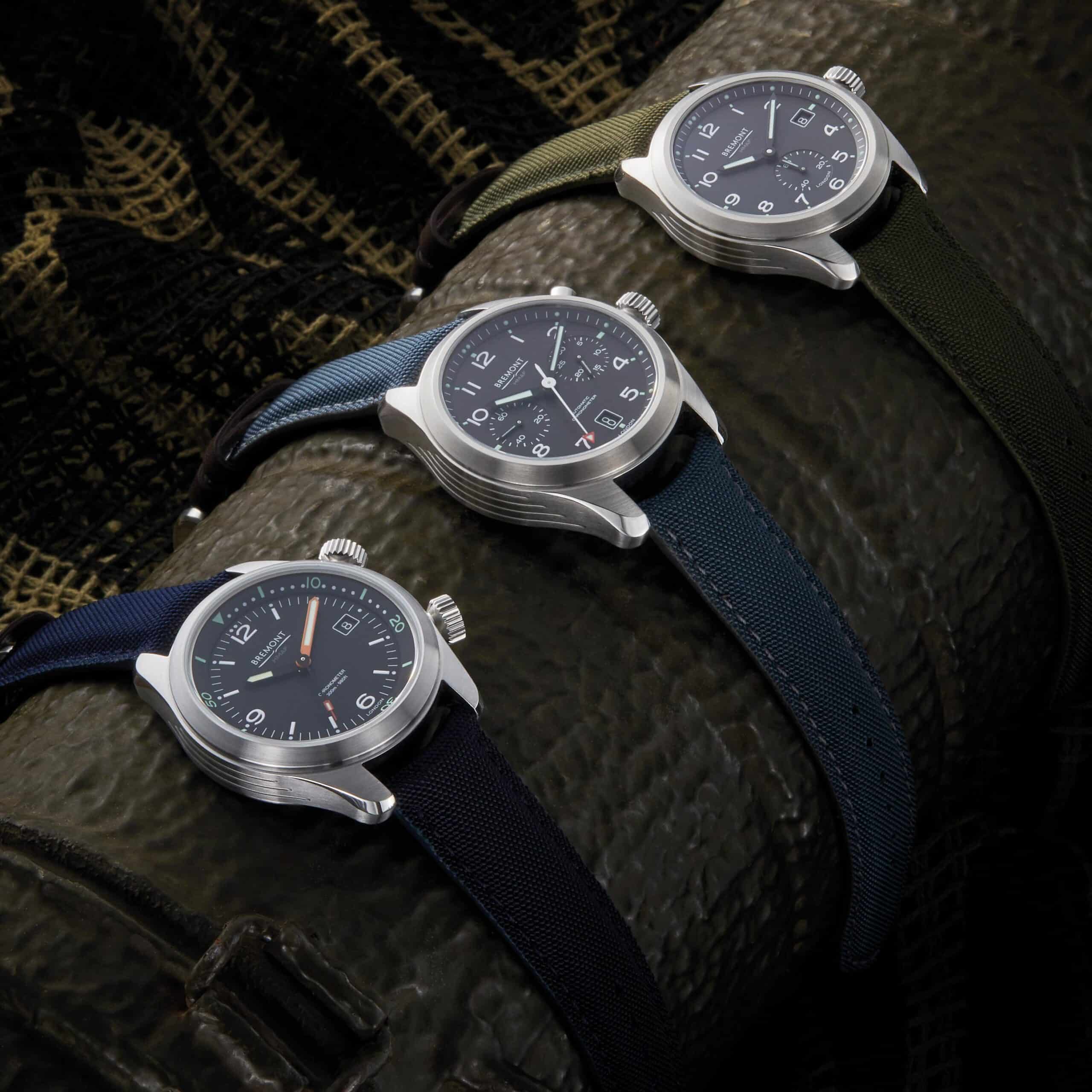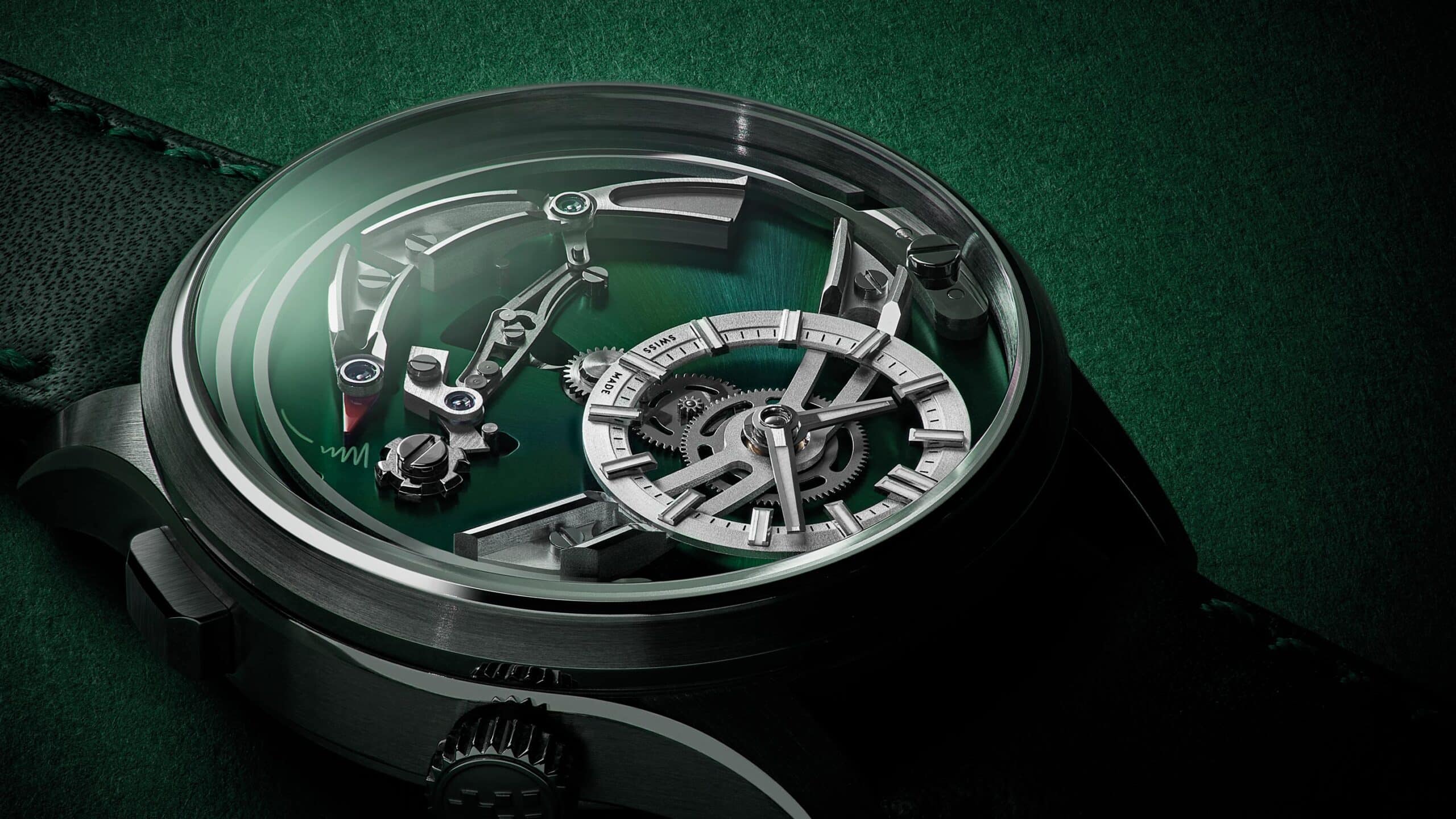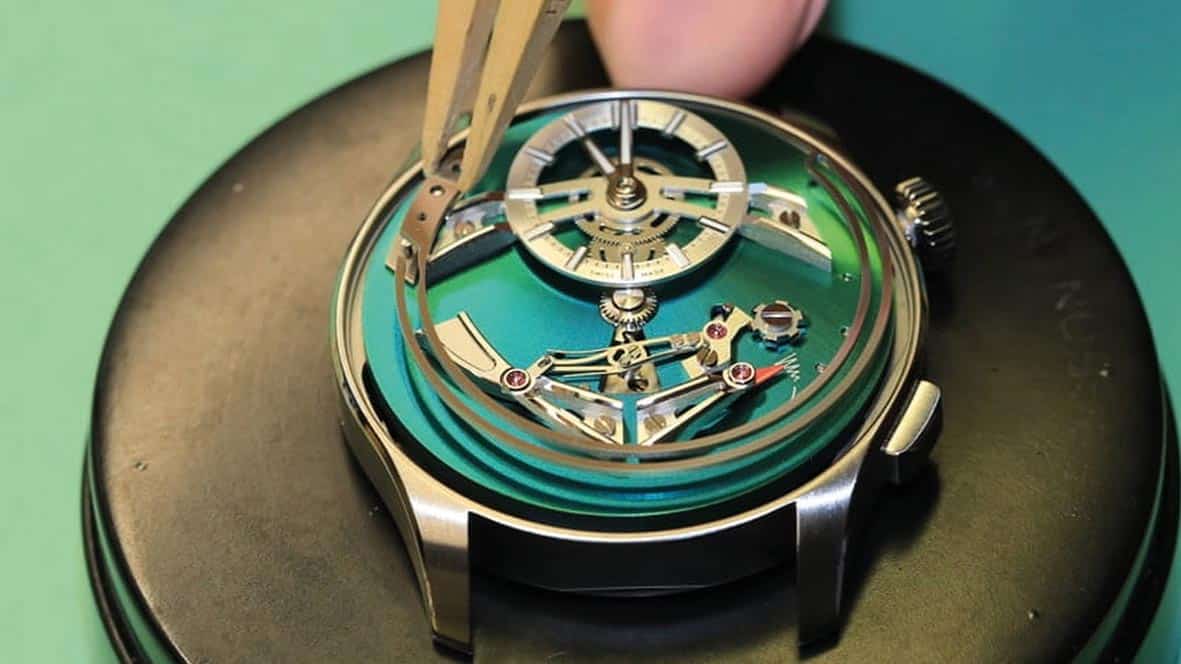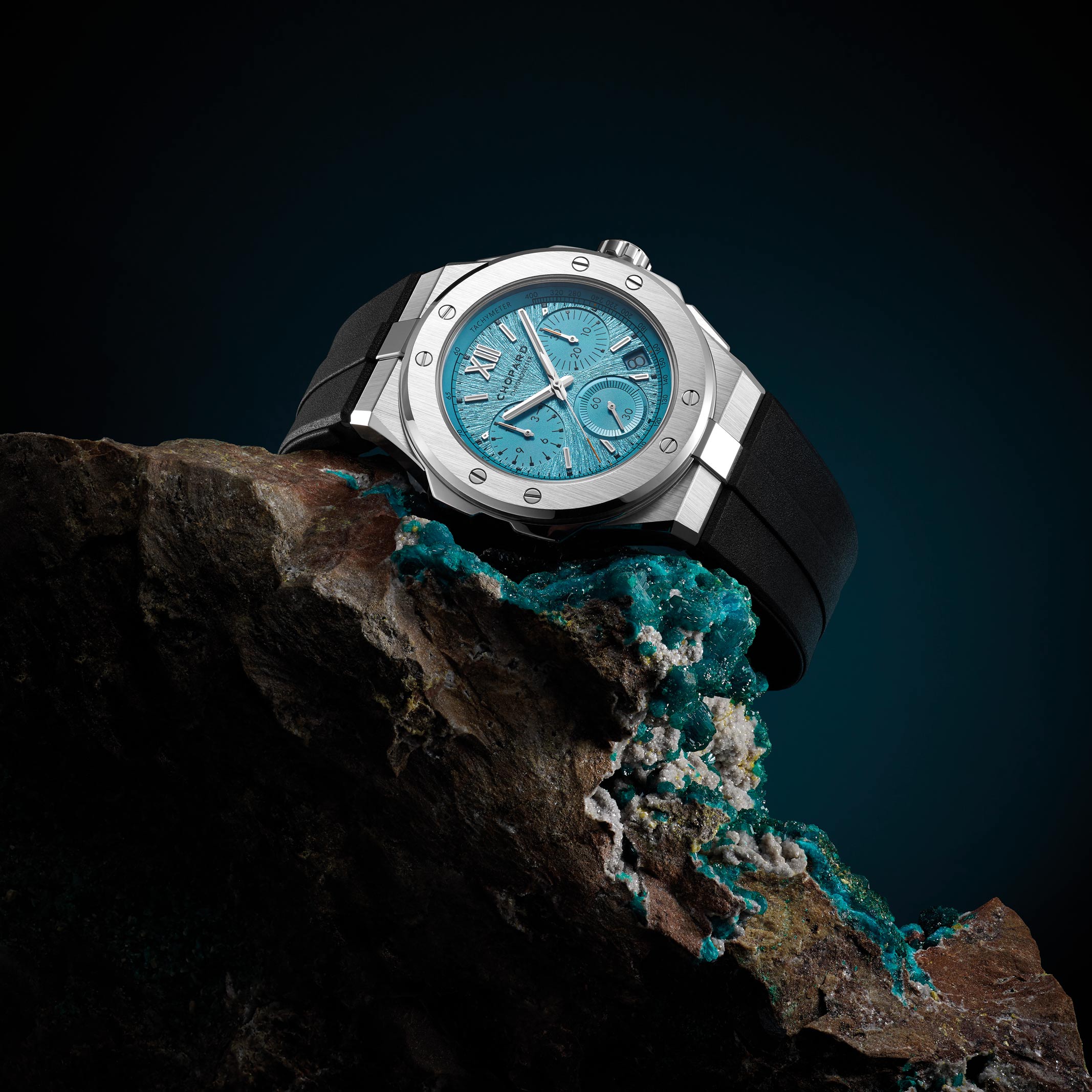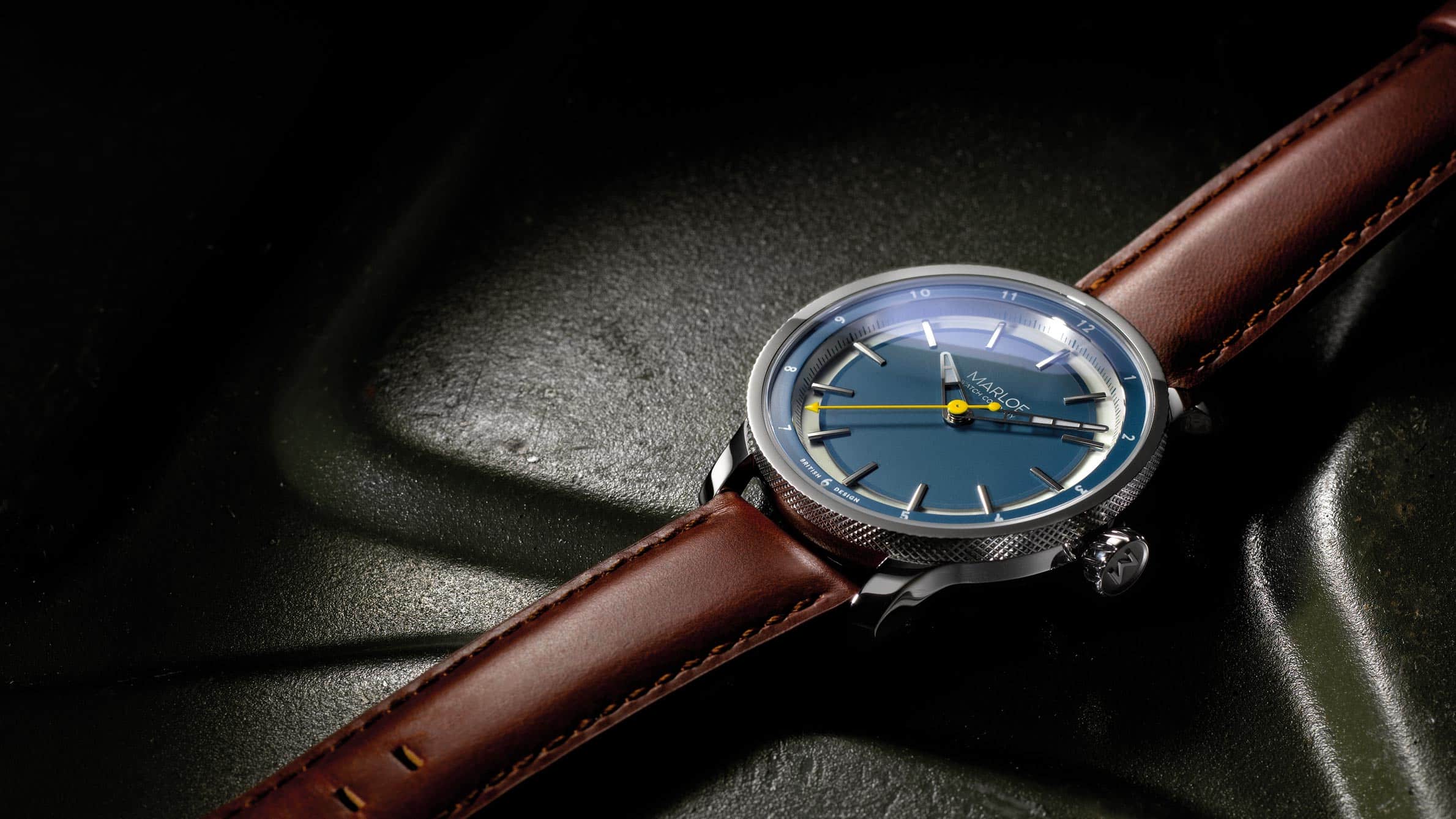Precision - Winter 2023
In this season’s issue All shipshape with Richard Mille. A Lange & Söhne on the concourse circuit. Bremont teams up with the armed services. Meteoric rise of Frederique Constant. Christopher Ward chimes in. Chopard bucks the trend with a big and bold dial. Brooklands Watch Company has an eye on speed records...As does Marloe. Our round-up of some of the most exciting new releases from the biggest brands
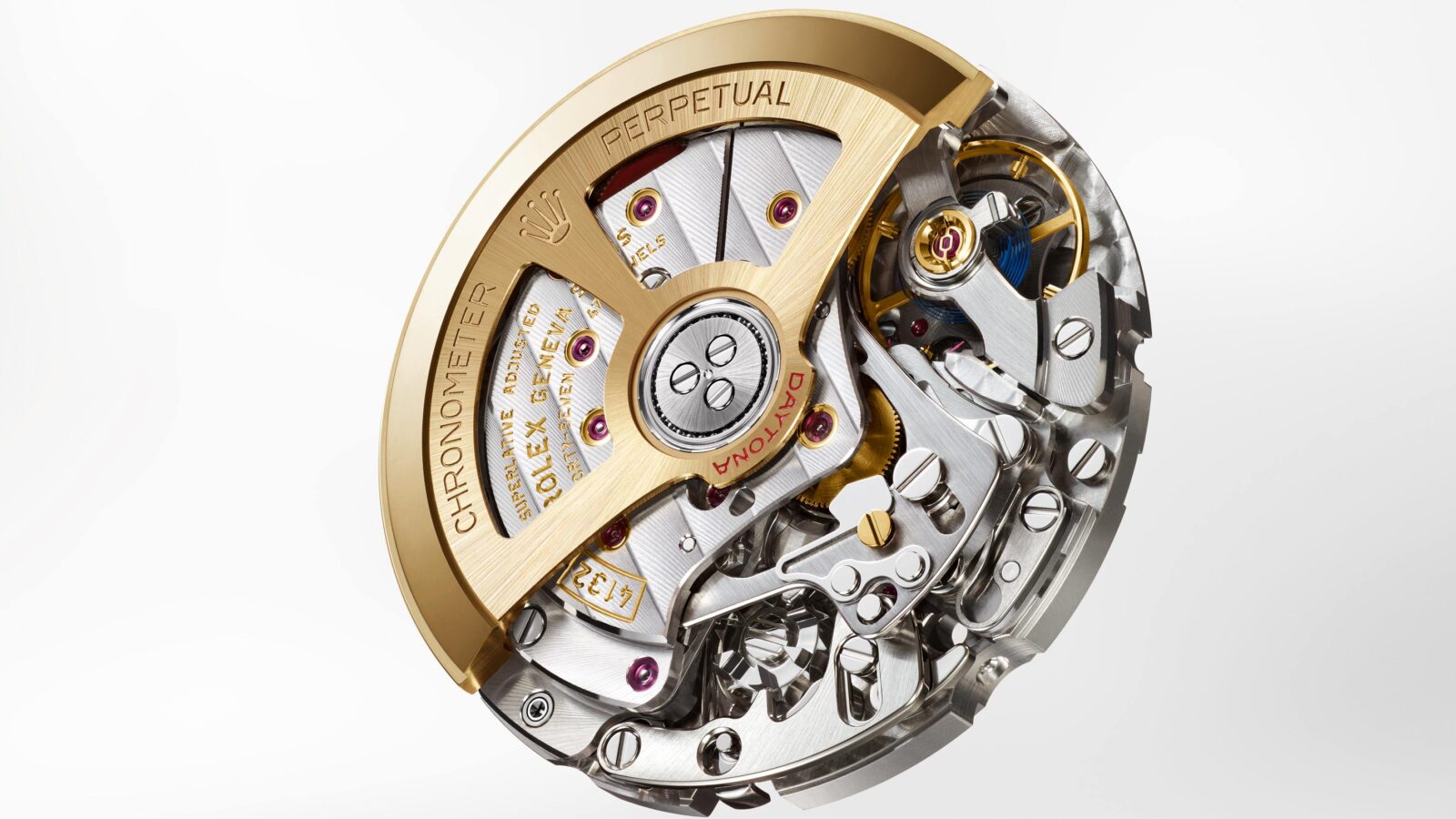
Daytona
RICHARD MILLE

Richard Mille’s new-found interest in maritime matters has led to the creation of the Richard Mille Cup.
Getty Images
A few years ago I was lucky enough to visit Richard Mille at his home in Brittany where, in a series of elegantly converted stables, he keeps one of the most impressive collections of competition cars I have ever seen – including a ‘fleet’ of Formula 1 machines that includes several McLarens and a BRM V16.
During our conversation I asked him whether or not he would be attending that year’s Voiles de St Barth Regatta in the Caribbean, at which Mille’s business partner, Peter Harrison, was due to compete in a Maxi 72 yacht – complete with a set of Richard Mille-liveried sails that cost £500,000. Richard Mille looked at me with an expression of dismay before replying: “No, I don’t like sailing and I don’t like boats. I am a ground guy, a man of the earth, not of the water.”
So it was more than surprising to tune in to an online press conference earlier this year at which Mille announced the founding of an event called the Richard Mille Cup – a race series not for four wheels, but for classic yachts.
The fact is, Mille has (to use a nautical term) gone off on a whole new tack after discovering the joys of boats through a friend from the old car world. Historic Porsche fans will be familiar with the name Benoit Couturier, the celebrated French restorer and dealer in some of the most important examples of the marque.
The two men became close after Mille commissioned Couturier to work on some of his classic Porsches (he has since performed his magic on “nine or 10” of Mille’s cars) and, during the course of many conversations, the subject of boats came up.

The trophy, stands at 1m tall
@ James Robinson Taylor
“One day he took me to see an old racing yacht he had bought, called Mariquita,” explains Mille. “I was so impressed by her beauty that I decided to buy one myself – and now I’m completely converted.” But Mariquita isn’t just “an old racing yacht”. She’s one of the most celebrated vessels of her type in the world, a 62-feet beauty built by William Fife III and launched in 1911 at Fairlie on the Clyde.
And the one Mille bought – another Fife-built yacht called Moonbeam IV – is equally attractive and similarly famous, having hosted numerous celebrities while in the ownership of Prince Rainier of Monaco. It was his ownership of Moonbeam IV that inspired Mille to establish a tough, long-distance race for classic yachts.
The Richard Mille Cup had its first running this summer, with 11 pre-war yachts battling it out from Falmouth to Le Havre, putting-in at harbours in Devon and Hampshire along the way.
“I wanted to carry on the racing tradition of these beautiful and historic yachts, but in a genuine way – which is why we chose to hold the regattas off the English coast, repeating similar events of the 1900s rather than doing something in a typical glamorous location.”
The success of the inaugural Richard Mille Cup means it is set to become an annual event and, for next year’s edition, Mille says a dedicated watch will be created that attempts to combine the brand’s high-tech engineering with the soulful nature of the century-old yachts.
Watch this space to see the (inevitably spectacular) result.
A Lange & SÖhne
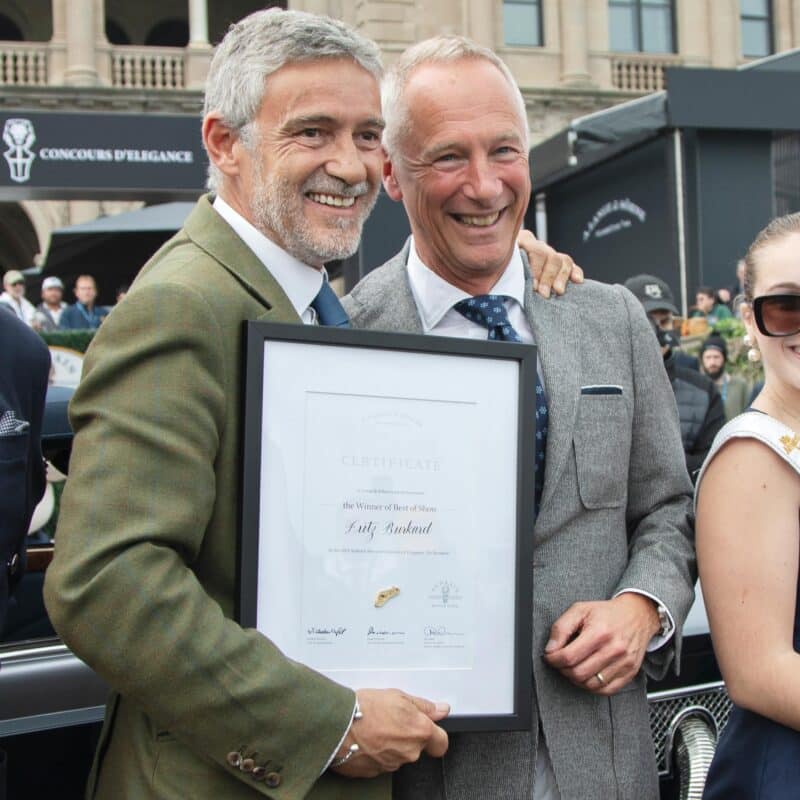
Fritz Burkard, left, receives his best in show award from Wilhelm Schmid
© Christine Armbruster Photography
If you did the rounds of concours events this summer, there’s a good chance you would have seen the name A Lange & Sohne. That’s because the watch house – based in the German town of Glashütte – is a sponsor of Italy’s Concorso d’Eleganza Villa d’Este, the UK’s Concours of Elegance and, most recently, the Audrain Concours which was held last month in Rhode Island.
The fact that such shows attract some of the world’s most valuable automobiles and their high-profile owners is not lost on Lange’s classic car-loving CEO Wilhelm Schmid, who brokered the brand’s first concours partnership (with the Villa d’Este event) soon after taking up his role in 2011.
The son of a garage proprietor and the former head of sales and marketing for BMW South Africa, Schmid counts among his personal stable of classics a 1954 Frazer Nash, two AC Aces, 356 and 911S Porsches and an MGB roadster that he has owned for more than 40 years.
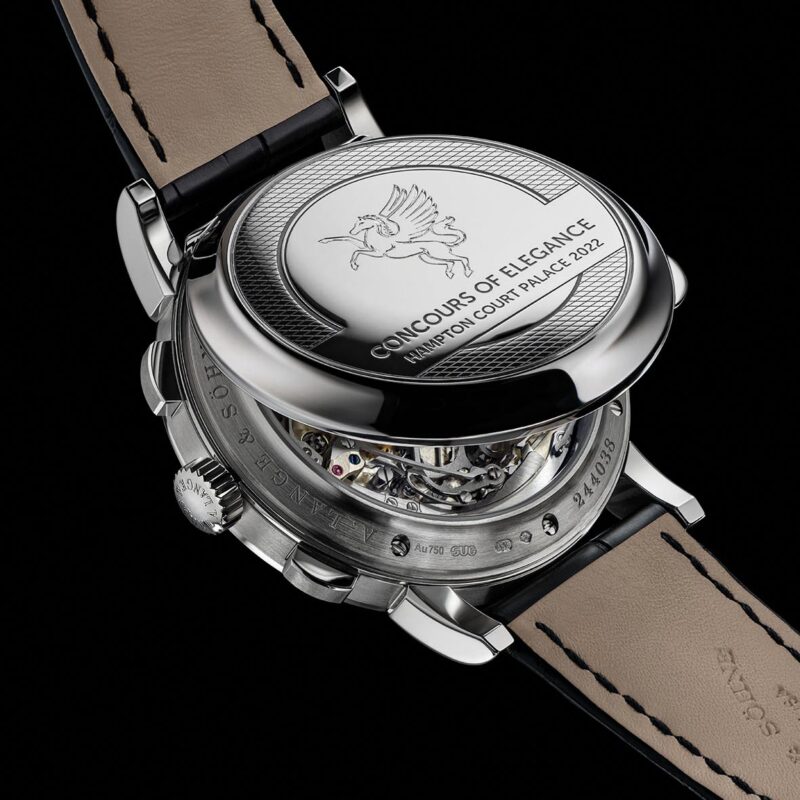
The auctioned 2022 engraved ‘Hampton Court’ 1815.
ERIK SCHIMSCHAR
Lange creates a unique wristwatch each year for presentation to the owner of the car judged best in show at the Concorso and, in 2022, it also made a one-off chronograph dedicated to the annual Concours of Elegance at Hampton Court (which the brand has sponsored since 2018). Instead of being awarded to the winner, the watch was sold by auction house Phillips, raising more than £900,000 for the Prince’s Trust.
“That was a one-off donated as ‘give-back’ strategy,” says Schmid. “Our usual action at Hampton Court is to sponsor the ThirtyUnder30 category of cars under 30 years of age owned by people under 30 – to keep classics relevant to younger people.”
Schmid says he chose to associate A Lange & Sohne with concours events because of the unifying thread between cars and watches and because he believes such shows help the brand reach the type of people who can afford to spend anything between £22,500 and six figures on a watch.
“It is far easier for someone who already loves mechanical objects to appreciate what we do than, say, for someone who is purely a collector of conventional art,” he explains – hence the reason for this year bolstering its portfolio of car show sponsorship with the addition of the Audrain Concours.
Although the event was only founded in 2018, the area’s connections with cars goes back to the dawn of motoring with the first Vanderbilt Cup taking place in Newport in 1904 when Willie K Vanderbilt and a few of his well-heeled chums competed against one another by driving their imported automobiles around the Aquidneck Park horse-racing track.
Combine that history with Newport’s motoring museum, a slew of historic mansions and its backdrop of the Atlantic Ocean and it comes as no surprise that the Audrain Concours & Motor Week is where A Lange and Sohne wants to be.
The event’s best in show trophy was this year scooped by collector Fritz Burkard, owner of a 1938 Delage D8-120 de Villars, who received a winner’s certificate from Schmid. So will Lange be back next year? Or is that a silly question?
A Lange & Sohne concours dates 2024: Concorso d’Eleganza Villa d’Este, Cernobbio, Italy, May 24-26; Concours of Elegance, Hampton Court, Surrey, August 30-September 1; Audrain Concours, Portland, Rhode Island, US, October 6. A Lange & Sohne 1815 Chronograph, above, £POA. alange-soehne.com
BREMONT
It’s little more than 16 years since Bremont sold its first watch, but the resolutely British brand led by machine-mad brothers Giles and Nick English has established a following that many more historic dial names might envy. Bremont watches have become especially popular with military personnel around the world, many of whom have privately commissioned special pieces marked with the insignia, symbols, nicknames or monograms of regiments, squadrons and ships.
But the ultimate vote of confidence from His Majesty’s Armed Forces has been to grant Bremont a covenant with the Ministry of Defence that makes it the world’s only luxury watch manufacturer allowed to use the signs, symbols and insignia of all three services – the British Army, the Royal Navy and the Royal Air Force.
The key word there is ‘luxury’, because it alludes to the fact that today’s cost-conscious MoD no longer issues its personnel with the sort of top-quality, relatively expensive watches that were produced in their millions throughout the war years and on until the 1970s. By that, we mean mechanical models by English and Swiss makers (Rolex included) that were once available from the quartermaster’s stores in exchange for the correct chit.
Nowadays a cheap and low-maintenance quartz watch is as good as it gets, with official issue watches now often being the more rugged efforts of Japanese brands such as Seiko, Casio or Citizen. But in the civilian world, the appeal of wearing a classic military watch has never been stronger, as evinced by prices achieved at auction for authentic examples made by the so-called ‘Dirty Dozen’ – the 12 wartime manufacturers (Buren, Cyma, Eterna, Grana, Jaeger-LeCoultre, Lemania, Longines, IWC, Omega, Record, Timor, and Vertex) whose products met the exacting criteria of Britain’s MoD for a ‘WWW’, or ‘wristlet watch, waterproof’.
The official specification demanded a watch be accurate and reliable, waterproof and shockproof, have a black dial, Arabic numerals, luminous hands and hour markers, an outer minute track, a shatterproof crystal and a stainless steel case housing a movement that fell within specific size parameters.
Most such watches were also marked with the MoD’s ‘broad arrow’ property mark that dates back to the 1600s when it was first used to denote objects paid for with the monarch’s money or owned by the government.
Initially adopted by the Navy, use of the broad arrow spread to the Army and other government-run institutions, including prisons – hence the popular image of inmates dressed in uniforms printed with the symbol. Today, the broad arrow is used almost exclusively by the MoD, and it remains an offence to apply it to an object without permission.
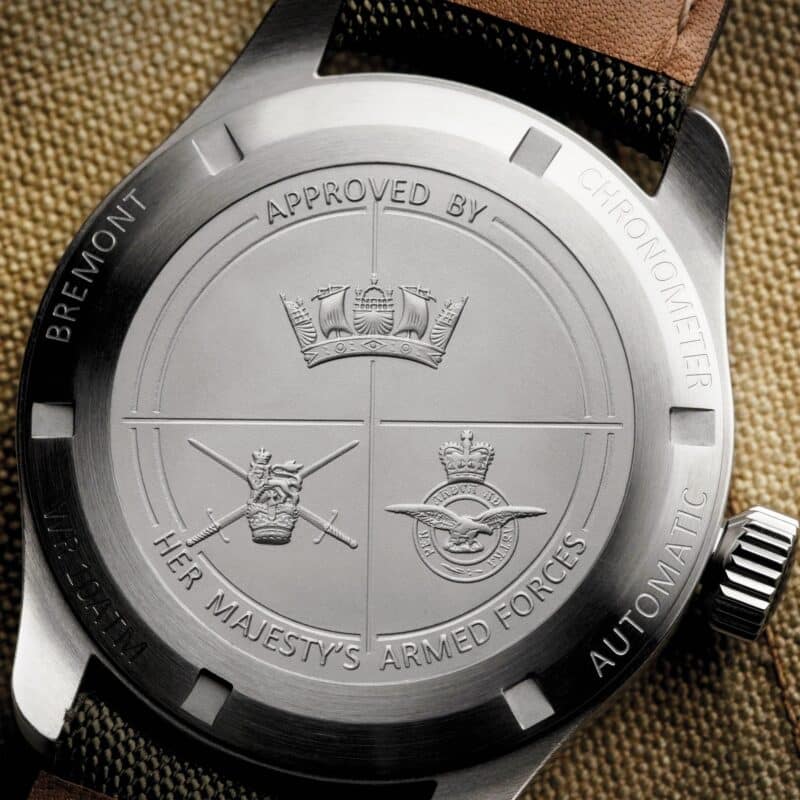
Bremont is the only watchmaker allowed to use the signs, symbols and insignia of our armed forces
Bremont
Since its watches are not bought in bulk by the MoD for issue to personnel, Bremont’s covenant does not allow it to use the broad arrow – but it is entitled to create designs with an authentic military look and, uniquely, it has that express permission to decorate them with the aforementioned signs, symbols and insignia.
As a result, most models created under the partnership are decidedly reminiscent of the Dirty Dozen watches of old, with the entry-level piece being the Broadsword, a 40mm three-hander which is a dead ringer for one of those originals.
The remainder of the line-up comprises the blackened Broadsword Jet, the Broadsword Bronze (bronze case), the Arrow, a 42mm chronograph and the Navy-inspired Argonaut, which can be had in black or blue dial configurations.
Prices for these watches range from £2895 to £3495 – and if you’re a serving member of His Majesty’s Armed Forces, you’ll get a 15% discount.
Bremont British forces watches, from £2895. bremont.com
FREDERIQUE CONSTANT
It was a bold move on the part of Dutch couple Peter and Aletta Stas when they set out to establish an all-new business making mechanical watches – in 1988. Traditional watch manufacturing was still deep in the doldrums after being knocked for six by the wide-scale arrival of quartz movements during the ’70s, and the revival of some of the great dial names of old was still years away.
All the same, the couple forged ahead with their aim to create ‘affordable luxury’ with the Frederique Constant brand, a name created from the first names of their respective great-grandfathers. Thirteen years later, they achieved their dream with the launch of Frederique Constant’s first in-house movement, the so-called Heart Beat Manufacture that proudly displayed its balance wheel through an opening in the dial.
As the years rolled by, the number of such ‘manufacture’ movements steadily grew to an impressive 30-plus, while innovations came thick and fast in the form of the use of silicon for key components (2007); an affordable tourbillon watch in 2008; a unique WorldTime mechanism in 2012 and, in 2018, the launch of the world’s first ‘hybrid’ smartwatch – a model featuring Bluetooth technology beneath a traditional, analogue dial.
By then, however, the couple no longer owned Frederique Constant and its smaller sister brand Alpina (a 120-year-old dial name they had acquired in 2002) – they had sold it, lock stock and barrel to Japanese giant Citizen in 2016 for an undisclosed sum.
Frederique Constant remains, however, at the Geneva manufacturing base that was established by the pair, a sizeable building which extends to almost 67,000 sq ft over four floors.
And, despite the couple no longer being at the helm, it continues to forge ahead with the design and manufacture of ever more intriguing, ever better quality watches – such as the just-released Classic Tourbillon Meteorite Manufacture pictured below.
Described as Frederique Constant’s “most exclusive creation”, it celebrates both the 35th year of the brand’s founding and 15 years since it unveiled its inaugural, in-house tourbillon watch.
Limited to just 35 examples, each of the timepieces has been built from start to finish by a dedicated team of two watchmakers, with every movement component being finished to an exceptional level – front and back – using traditional hand tools.
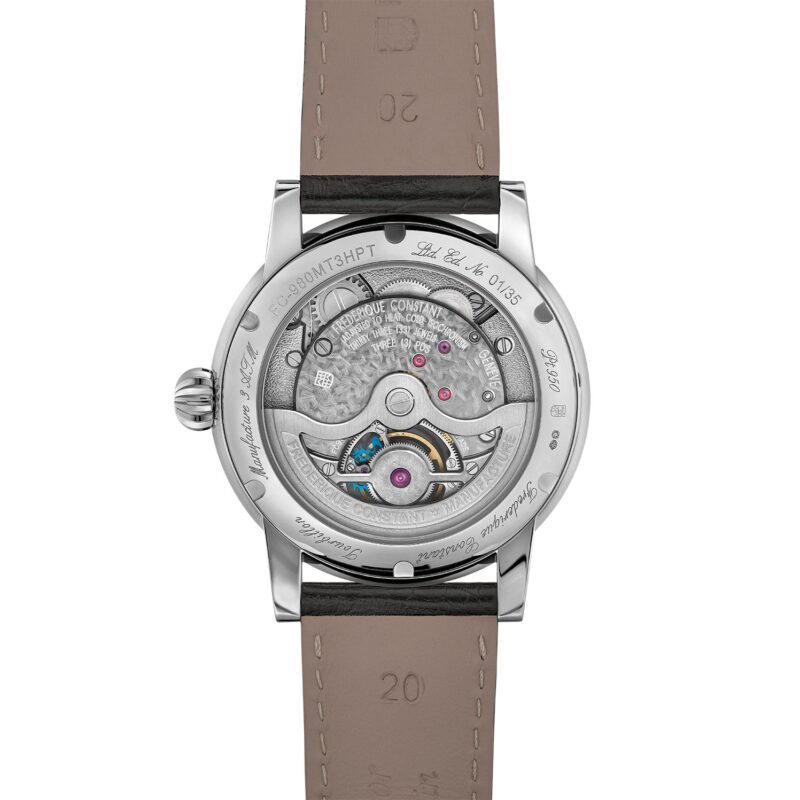
As the name hints, the Classic Tourbillon Meteorite Manufacture is part space rock – and limited to 35 pieces
Frederique Constant
The 39mm watch features a case hewn from 950 platinum containing a dial cut from a meteorite that fell to Earth in Gibeon, Namibia.
Measuring just 0.5mm thick, the celestial slice is coated in ruthenium to prevent it from crumbling – and no two dials are alike due to the unique patterns found in each meteorite cross-section.
So each one really is an ‘exclusive’ in the true sense of the word.
Frederique Constant Classic Tourbillon Meteorite Manufacture, £37,995. fredriqueconstant.com
CHRISTOPHER WARD
When Mike France, Peter Ellis and Chris Ward – three entrepreneurial British horophiles – established the Christopher Ward dial name in 2004, e-commerce was largely regarded with suspicion by the industry. “The main intent was to take the middle man out of the process and deal directly with the consumer via a website,” France once told me during an interview for The Daily Telegraph. “We were one of the few companies shaking the tree and I genuinely think we spearheaded a trend.”
Operating from its Maidenhead HQ, Christopher Ward launched its first watch, the C5 Malvern, in 2005. It soon gained traction thanks to positive reviews on internet forums and, in 2008, the brand upped its game by collaborating with Swiss movement maker Synergies-Horlogères to introduce a mechanical chronograph to its collection, the C7 Rapide. But it was the official merger with Synergies-Horlogères in 2014 that really established Christopher Ward as a serious player in the mechanical watch game, a place it sealed with the introduction of its first in-house movement, the Calibre SH21, which was developed by a young, 20-something watchmaker called Johannes Jahnke.
As a result, Christopher Ward’s proud mantra during the past decade has been ‘British design – but Swiss made’.
Set to celebrate its 20th anniversary next year, Christopher Ward has covered the whole watchmaking gamut from dive watches to aviation watches and from dress watches to, of course, automotive models – even announcing a partnership in 2017 (but now defunct) that made it the official watch of the Morgan Motor Company.
And the fact that it has majored on making timepieces that are both of good quality and affordable hasn’t held the brand back from creating some decidedly ambitious pieces featuring mechanisms and complications that would normally be associated with watches costing five or even six-figure sums.
The most recent of these came with the November 2022 launch of the remarkable C1 Bel Canto model, a watch that made a mockery of the long-held tradition of chiming watches being within the reach of only the wealthiest of collectors.
The Bel Canto, which carries a price tag of just £3195 on a leather strap (£3530 on a bracelet) caused such a stir in the watch world that the first limited run of 300 blue dial versions sold out in eight hours.
The brand has been able to make the highly complex musical watch at such an affordable price thanks to a combination of its ownership of Synergies-Horlogères (meaning the mechanism could be designed, developed and created in-house) and, of course, the direct-to-consumer selling method on which it was founded.
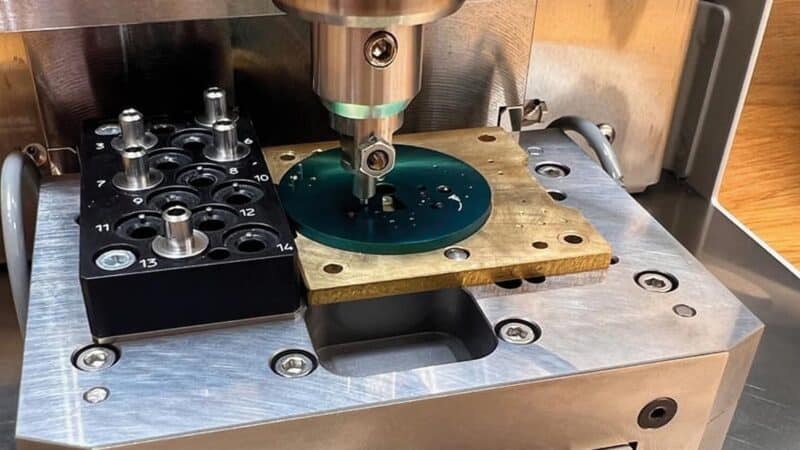
The chime of the C1 Bel Canto comes courtesy of a steel spring that runs around the edge of the dial
Christopher Ward
Even so, the watch represents real value for money (the most affordable chiming watch in the world from a reputable brand, bar none) not least since its open-worked architecture compares favourably with models by ultra high-end brands.
So the fact that Christopher Ward has left the Bel Canto’s dial mischievously unbranded is probably a move to keep people guessing for as long as possible…. and it works.
The watch has been nominated as a contender in the prestigious Petite Aiguille category at the Grand Prix de L’Horlogerie de Genève taking place on November 9.
Christopher Ward C1 Bel Canto, from £3195.
christopherward.com
CHOPARD
Watches come in all shapes and sizes and with a range of different functions – but one very specific feature that has enjoyed a resurgence of late is the so-called ‘integrated’ bracelet. It’s nothing new, of course. Integrated bracelets – which blend almost seamlessly with the watch head rather than being attached by bars between its lugs – have been around since the late 1960s when designer Gérald Genta revamped Omega’s Constellation to create some groovy models such as the rectangular Emeraude and the cushion-cased Chronometer.
It was Genta, too, who penned the two most celebrated integrated sports watches of all – the Audemars Piguet Royal Oak (1972) and the Patek Philippe Nautilus (1976).
In the past two or three years, however, the integrated sports watch offering has burgeoned with brands including Bell & Ross, H Moser & Cie and A Lange and Sohne (to name but a few) all joining the fray. Among the most successful new arrivals has been the Alpine Eagle from Chopard, a watch first seen in 2019 that (as we explained in last year’s Precision special) was inspired by the quartz-powered St Moritz of 1979.
The St Moritz was designed by brand co-president and insatiable classic car fan Karl-Friedrich Scheufele when he was just 22 years of age and was working his way around the firm’s various departments in order to understand the ins and outs of the business.
In turn, his son Karl-Fritz championed the idea of creating the Alpine Eagle which, up until now, has been available in 41mm and 36mm versions, all with rock-like textured dials designed to evoke the iris of an eagle’s eye and hands reminiscent of the bird’s feathers.
The case, meanwhile, features a bezel secured by eight visible screws and a crown engraved with a compass rose – symbolic of the eagle’s remarkable navigation ability.
But just as this magazine issue was coming together, Chopard revealed a surprising new take on the Alpine Eagle. At a time when watches are once again becoming smaller and more delicate, with case sizes dropping back to as little as 36mm in diameter, the latest Alpine Eagle – the XL Chrono – measures a bold 44mm.
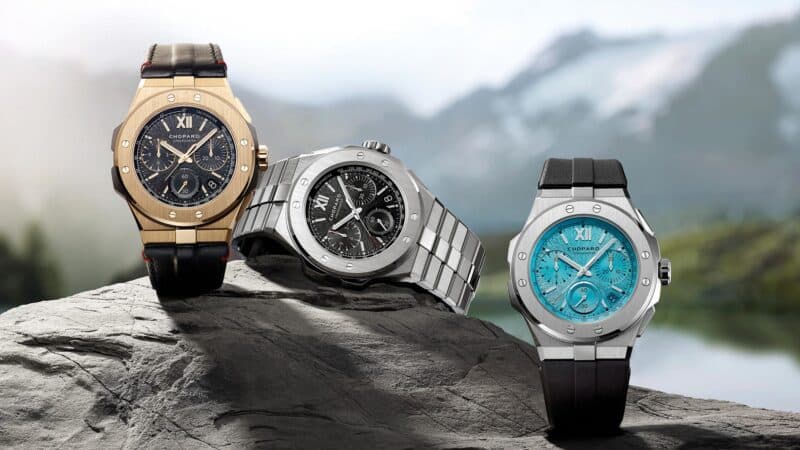
The new Alpine XL Chrono is a bold statement from Chopard, with its 44mm case
Chopard
It really is a hefty, statement-making piece – and one that’s probably a lot more of a practical proposition for anyone who wants a chronograph to use, for example, as a rally or lap timing tool. The large size makes everything on the dial easy to read, while the flyback movement – which allows the chronograph to be stopped, re-set and re-started with a single push of the button – has been specifically developed for the watch and features a unidirectional gear system that enables it to self-wind more quickly after the energy-sapping chrono has been used.
There’s also a hack seconds function that allows the watch to be set precisely to a time signal, while a tachymeter scale and a few subtle, orange highlights that contrast sharply with the new, Maritime Blue dial facilitate speed and distance calculations.
We love it. Although small might be beautiful, Alpine Eagles seem to be even more so when they are XL sized.
Chopard Alpine XL Chrono, from £17,400. chopard.com
BROOKLANDS
Anyone who appreciates the sort of meticulous engineering required to create a competitive racing car will likely agree that the Concorde supersonic passenger plane was among the great marvels of 20th century design. Pilot, saloon car racer and aerospace engineer Simon Jeffs certainly does – and, unusually, it was his love of Concorde that resulted in him founding the Brooklands Watch Company back in 2017.
“I have had a long association with the Brooklands race circuit, both as a result of my own interest in racing and through that of my uncle, who bought various cars that had competed there including an Alvis and a supercharged Alta,” explains Jeffs. “The Alta was awarded a Brooklands 120mph badge and was one of the cars that was supplied in kit form and built at Brooklands. During visits there, I had often seen the test nose cone from the sixth Concorde air frame, which was a prototype aircraft used ahead of the main fleet being built. Brooklands needed to raise funds to purchase an actual Concorde for display and put the nose cone up for sale – so I bought it.”
It might sound like an odd object to covet, but if anyone should own such a thing Jeffs is surely the man: his business, Orange Aero of Thame, Oxfordshire, specialises in supplying pre-owned (and meticulously reconditioned) components for the type of Rolls-Royce Trent turbofan engines used on aircraft such as the Airbus A330.
Once Jeffs had taken possession of the nose cone, however, he had to decide what to do with it – at which point he turned to designer Sebastian Conran, son of Sir Terence.
“I commissioned him to create a sculpture of it, a project that took six years to complete,” says Jeffs. “A full-sized study of the nose cone and visor assembly, it sits on a base made from 6mm thick stainless steel that weighs five tons and is fitted with bearings from an Olympus turbine engine that enable the whole thing to rotate and to be locked in any position. The project sowed the seed for the design and manufacture of a British heritage product, and it was then that I started to really appreciate the amazing heritage of Brooklands – and, in particular, the fact that Colonel Henry Lofft Holden, who had designed the track, had also designed the world’s first motor racing chronograph accurate to 1000th of a second way back in 1907.”
Thus Jeffs founded the Brooklands Watch Company and asked Sir Terence – who died in 2021 – to design its first model, the Triple Four Racing Chronograph. For what proved to be one of his last projects, Sir Terence took inspiration for the watch from the W12, 24-litre Napier Lion aero engine that powered Sir John Cobb’s Napier-Railton to the all-time Brooklands lap record of 143.44mph in 1935.

The record-breaking Napier Railton has been an inspiration for the Brooklands Watch Company
Dolly Clew
The Triple Four has since been well-received in motoring circles, so much so that Jeffs has several new watch designs in the pipeline – the first of which will be revealed in Motor Sport’s monthly Precision page very soon.
Until then, try to visit Oxford Airport at Kidlington where Sebastian Conran’s Icon sculpture is on long-term display having previously been shown at the Royal Albert Hall, Royal Ascot and the Goodwood Festival of Speed.
Brooklands Watch Company Triple Four Racing Chronograph, £5754. brooklandswatches.com
MARLOE
We can expect to see the products of Marloe Watch Company cropping up in pit garages and around race circuits a whole lot more following news that the Scotland-based business has been officially announced as a patron of the British Racing Drivers’ Club.
Part of the deal will see Marloe serve as an official partner of the BRDC’s Young Driver Programme that seeks to help burgeoning talent on the road to success through its complementary SuperStars and Rising Stars schemes.
A key element of these sees BRDC scouts visiting national and international race meetings with a view to spotting already successful young drivers who might have the potential to make it into the big league.
Marloe founders Oliver Goffe, a marketeer, and Gordon Fraser, the brand’s designer, will attend events at the BRDC’s Silverstone base – including next year’s British Grand Prix – and will make the firm’s presence felt through trackside sponsorship and the installation of custom-buit Marloe clocks in the clubhouse.
Mark Brown, head of sponsorship at the BRDC, believes the new relationship promises to be mutually beneficial. “As a new and emerging British watch brand producing mechanical timepieces, Marloe is a perfect fit,” he says.
But as regular readers of Motor Sport’s Precision pages will know, this is not Marloe’s first foray into the automotive world. Back in 2021 we announced a partnership it had formed with the Campbell Family Trust which enabled the brand to create watches commemorating some of the many milestones in the lives of record-breaking duo Sir Malcolm Campbell and his son, Donald.
The first such watch was the centenary piece launched two years ago to mark the 100th anniversary of Donald’s birth, since when the Coniston model on which it was based has been made available in four further variations (from £349). The blue dial CN7 (named after Donald’s 1964 Lake Eyre record car); the white dial K4 (named after Sir Malcolm’s Bluebird hydroplane that achieved 141.74 mph on Coniston Water in 1938), the black dial Black Edition and the pale blue dial Trackday (now sold out).
One benefit of the partnership is that royalties earned from the sale of each Campbell-related watch go towards maintaining and promoting the surviving Bluebird vehicles.
Earlier this year, Marloe Watch Company installed a display cabinet at the National Motor Museum as part of an exhibition of memorabilia, trophies and personal items belonging to past Land Speed Record drivers. “It’s worth noting,” observes Goffe, “that British drivers, engineers, mechanics and cars have broken the Land Speed Record more times than any other nationality.”

Marloe’s Coniston CN7 takes its name from the Proteus Bluebird CN7, which reached 403.1mph in 1964
The exhibition enabled Marloe to present the CN7 watch alongside the actual Proteus Bluebird CN7 which has been on permanent display in the museum since 1972.
Goffe says Marloe’s role as the museum’s official timing partner promises to provide the brand with significant inspiration – even hinting that Fraser may already be working on a watch based on the 350HP Sunbeam in which Sir Malcolm clinched his first Land Speed Record by reaching 146.16mph on Pendine Sands in Wales.
The centenary of that famous event falls on September 25 next year – so Fraser still has a bit of time to get it right…
Marloe Watch Company Coniston Auto CN7, from £349. marloewatchcompany.com
